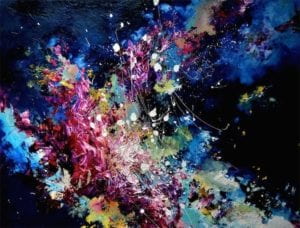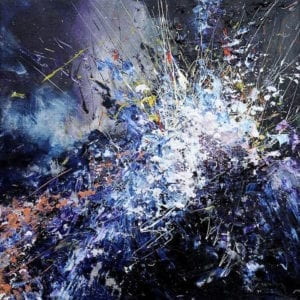Oskar Fishfinger was a towering figure in the area of motion graphics and animation and he was best known for his ability to combine impeccably synchronized abstract visuals with musical accompaniment. I was highly attracted by his Optical Poem as it perfectly demonstrates his skills in his area of expertise. In the first half of the video, Oskar used different dynamic circles to represent running music. For example, big circles always means strong beats and accentuation. Besides, the circle gets bigger or smaller reflect the change of sounds. In the latter part, the music sounds more varied and there comes to appear many different timbres. At the same time, the visuals also change. I can see the new image such as triangle, rectangle and many other polygons that represent different timbres. I felt the beauty of harmony which caused by the consistency between visuals and sounds in Optical Poem.
Optical Poem was listed as a1938 film. Circles pop, sway and dart across the screen, all in time to Franz Liszt’s 2nd Hungarian Rhapsody. It might be relatively simple to manipulate a shape in a computer, but Fishfinger’s technique was decidedly more low tech. This work was made before the days of digital. He Used bits of paper and fishing line, individually photographed each frame, somehow doing it all in sync with Liszt’s composition. Actually, this is an experiment in conveying the mental images of music in a visual form and it reflects a time capsule on the social attitudes towards modern artists in the 1930.
Reference:
https://www.google.com/doodles/oskar-fischingers-117th-birthday?hl=zh-CN
http://www.openculture.com/2014/09/optical-poems-by-oskar-fischinger.html

